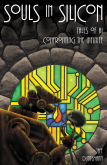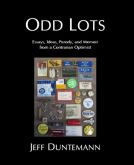History is often written by the victors, and one of the gnarliest problems with victor history is not what the victors say, but what they leave out. You can ask the losers what they think, but sometimes what the victors leave out is something the losers would just as soon forget as well.
I learned something today about the founding of the Polish National Catholic Church, the first significant Old Catholic jurisdiction in America. The history we have of the PNCC describes the the tension between the predominantly Irish Roman Catholic clergy in America and the waves of dirt-poor Polish immigrants who started arriving in the late 1880s. This tension did exist and was the energizing force behind the Polish Old Catholic movement, but the actual triggering incident in the split between Polish immigrants and the Roman Catholic Church may have been a riot at St. Hedwig's Church in the Bucktown neighborhood of Chicago.
Some of the story is here; scroll down about a third of the way through the article. I'll summarize: Overwhelmed by the numbers of new immigrants pouring into Bucktown, the Polish-American pastor of St. Hedwig's brought in Fr. Anthony Kozlowski, a fiery, European-educated young Polish priest to help minister to the parishioners, few of whom spoke English. St. Hedwig's was under the administration of the Resurrectionists, an order of priests of mostly Polish extraction. Their former nationalities aside, the Resurrectionists were conservative and fiercely loyal to the Pope. The order attempted to play down the Polishness of religious expression at St. Hedwig's. Many of the younger immigrants were suspicious of the order, thinking that it was being pressured by the Irish hierarchy that otherwise ran the American church, and the Chicago church in particular. Details are thin, but in early 1895, Kozlowski led a revolt against the Resurrectionist pastor, Thaddeus Barzynski, and his brother Joseph Barzynski, that eventually resulted in two-thirds of the St. Hedwig's congregation quitting the church and following Kozlowski away from governance by the Pope.
The revolt went critical on February 7, 1895. Kozlowski's hotheads broke into the St. Hedwig's rectory, where the Barzynskis had barricaded themselves, and assaulted the priests. The police were called, and found a crowd of 3,000 immigrants milling around the church. When the officers attempted to disperse the crowd, several protesters threw powdered red pepper in their faces. Dozens were injured in the ensuing brawl, and Chicago's (Irish) Roman Catholic archbishop shut down St. Hedwig's for several months.
By that time, the 1,000 or so immigrants who objected to Papal rule had bought land a few blocks away and began built their own church, All Saints Cathedral. This is where my other histories pick up: Kozlowski traveled to Berne, where he had earlier met the the leaders of the European Old Catholic Church. The Old Catholic bishops of Germany, Switzerland, and Holland consecrated him as the first bishop of the Polish Catholic Church of America. A similar but unrelated situation was then playing out in Scranton, Pennsylvania, in which a parish priest named Francis Hodur broke with the Pope and in 1897 founded the Polish National Independent Catholic Church, again outside Papal control. Still more Polish-American groups broke with the Pope as the 1890s wound down, including a major one in Buffalo and smaller ones in Cleveland and other cities. In the years after Kozlowski died unexpectedly in 1897, the European Old Catholics persuaded the various American parishes of independent Polish Catholics to unite under a new banner, the Polish National Catholic Church. In 1907 Hodur was consecrated bishop by the same groups that had consecrated Kozlowski, and he led the PNCC throughout his long life until his death in 1953.
It's interesting to see where the various histories disagree: The current Roman Catholic pastor of St. Hedwig's of Chicago provided the factual information on Kozlowski's revolt that I summarized above, but suggested that the Polish National Catholic Church never really went anywhere. Not so: The PNCC was a force in American Catholicism as long as there were Polish-speaking communities in America, and only began to decline after the children of Polish immigrants assimilated into English-speaking American culture after WWII. (There has been a resurgence of PNCC parishes in Wisconsin and other places in the past few years, serving recent Polish immigrants.) Histories of the PNCC emphasize the heroic efforts of Bishop Hodur, even though Kozlowski was the first Polish American Catholic to quit the Roman church, and made the European Old Catholics aware of Polish discontent with Papal Catholicism. Riots of Poles against the Roman Catholic Church happened in other cities as well as Chicago, but PNCC histories tiptoe very lightly around them. Histories of the PNCC published by the PNCC mention Kozlowski only in passing, if they mention him at all.
Once again, the lesson is this: If you want anything approaching the truth, you have to listen to both sides. And sometimes, you have to fill in the gaps that neither side wishes to fill. But hey, who ever said history was an easy subject?












Excellent summary Jeff. You’re right though about “details being thin.” I am currently researching my family history and they were among the first 200 families or so of St. Hedwig’s Parish in 1888. Later they aligned with All Saints, so I can only imagine that they were among the pro-Kozlowski supporters of that time. Later they came back to the Roman Catholic Church but many questions remain unanswered for me. If you are interested in learning more details about the events leading up to the riot, and the formation of All Saints, check out their 100 year anniversary retrospective: “The History of All Saints Cathedral of the Polish National Catholic Church, Chicago, Illinois. Publisher: All Saints Cathedral Parish c1996, available at the Chicago Public Library Harold Washington Center, 400 South State Street.
I’ve gotten bits and pieces all over the place, but that book would be worth looking for. My favorite so far, which you may not have seen, is The Origin and Growth of the Polish National Catholic Church by Rev. Stephen Wlodarski (1974). Look on ABEBooks.com; I’ve seen it there many times fairly inexpensively.
I belonged to a PNCC parish once and loved it, and still attend the new All Saints Cathedral outside Chicago on Higgins Road when I can. (That’s not often, as I live in Colorado Springs.) It is one of the warmest and most welcoming churches I’ve ever experienced, and given my natural inclination to think of myself as the Eternal Outsider, that means a great deal.
Loved this summary of the origins of All Saints PNCC. My paternal great-grandparents were among the first that left St. Hedwig’s and went to All Saints. My paternal grandparents were married in All Saints, and are buried in the cemetery next to the church on Higgins Road. Really didn’t understand anything about the PNCC until I started doing the family history. There were two books cited in the above comments. I’m going to see if any are available through my library.
Jeff! Norm is working on geneology and found Joseph Barzynski’s name on one of my great grandparents’ marriage record last night. I tried to explain about the St. Hedwig riots, but could not recall many details, so I did a google search and you popped up! Małe swiat, as they said in the old neighborhood! Father Vincent founded all of the old northside Polish parishes and did so much more. His brother, Joseph, was apparently not as “gifted.” Here is a neat letter that I found on the Newberry site: http://flps.newberry.org/article/5423968_10_0947
Say, “hi” to your wife for me! Joan
PS: My grandma referred to the PNCC as “The Coaxies,” I think because they might “coax you in there.”
We belonged to the PNCC parish in Phoenix back when there was a PNCC parish in Phoenix. We’ve also attended the All Saints cathedral out Higgins Road when we’re in Chicago and much enjoyed their warmth and welcome. If that’s coaxing, the Catholic world could do with a little more of it! Male swiat, indeed!
Sorry for the little knowledge of the English language I use google translator. I’m interested in Bishop Kozlowski.
Very little is written on the internet about Anthony Stanislaus Kozlowski. Dates and place of birth are different 1835 -1857. On his grave is written birthplace Zakroczym Poland.
http://www.findagrave.com/cgi-bin/fg.cgi?page=pv&GRid=58532270&PIpi=32980365
He was the first Polish Bishop in America, but no one has ever heard of Bishop Kozlowski in Poland and in Zakroczym . Sorry to say but genealogical research shows that Kozlowski never been born in Zakroczym. I think if the church does not know the place of birth of Bishop Kozlowski I know that the Bishop wrote a Testament, and there probably he writes about family and place of birth?
https://news.google.com/newspapers?
nid=2249&dat=18990821&id=8PUzAAAAIBAJ&sjid=7yIIAAAAIBAJ&pg=1422,5470568&hl=en
[…] now Covenant Presbyterian Church, located at 2012 W. Dickens Ave. The text is from an interesting blog, which I’ll take as solid enough information. The story starts in 1890s Polish […]
my paternal grandparents and great grandparents are buried at All Saints Parish cemetery while my maternal grandparents are buried at St. Adelberts in Niles.
You can surmise what side everybody was on. Needless to say they never got along and that’s putting it mildly.